Italy’s Amalfi Coast is famous for many things—stunning scenery, luxury vacationing, limoncello. But for World War II buffs like us, it’s also a place to learn more about the Allied invasion that eventually led to Italy’s liberation. And that’s just what I did on my March 2022 visit.
Just east of the (“official”) Amalfi Coast is the town of Salerno where Allied troops landed on September 9, 1943. This landing was part of the invasion codenamed Operation Avalanche.
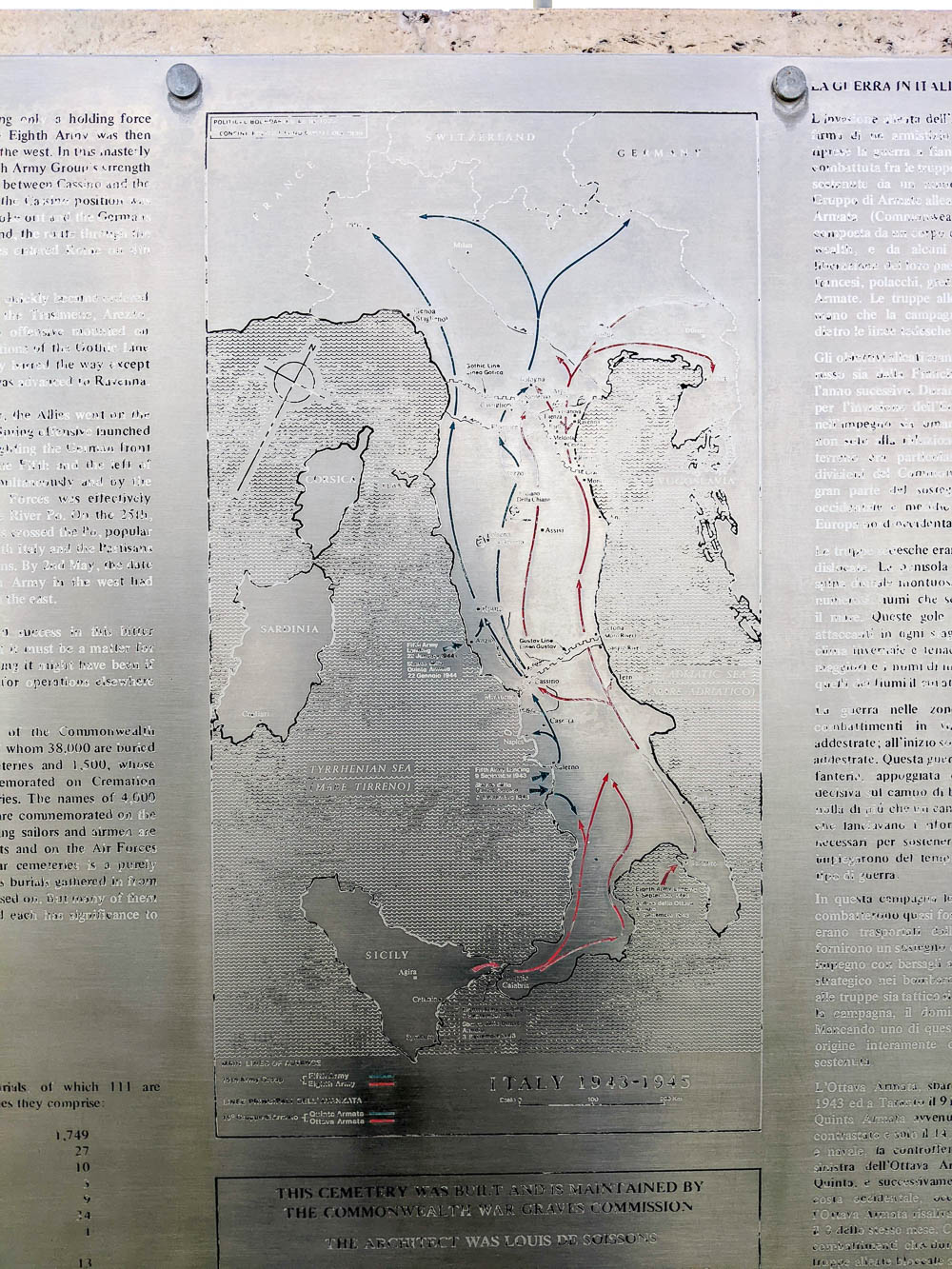
Operation Avalanche
After the successful campaigns in North Africa, the invasion of Sicily, and the fall of Mussolini in the summer of 1943, Allied leaders felt the time was right to make a move on mainland Italy.
On September 9, 1943 an Allied invasion force of around 165,000 troops landed on the beaches of Salerno, Italy. This landing, Operation Avalanche, was one third of a 3-part amphibious initiative. (The other landings were Operation Baytown in Calabria on September 3 and Operation Slapstick in Taranto also September 9.)
For visiting these and other sites around Italy, check out: A Travel Guide to World War II Sites in Italy by Anne Leslie Saunders. It contains detailed lists of sites all over Italy with excellent historical background.
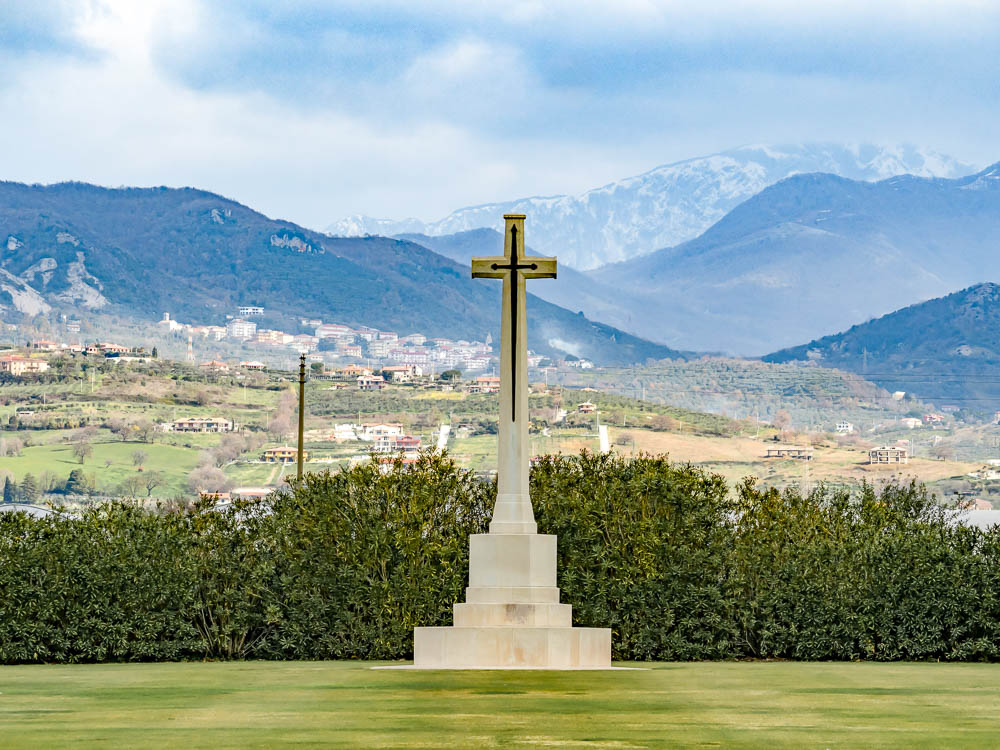
Brief rundown of Operation Avalanche
Operation Avalanche objective: Operation Avalanche’s immediate objectives were to seize the port of Naples and the Monte Corvino airfield, then cut across Italy to the east coast in order to trap the German troops in the south.
However, Operation Avalanche had a few overarching objectives as well. Mainly, to get Allied troops onto the European mainland (finally!) and to draw German troops away from the Russian front in the East and away from France in the west where the Allies were planning another pretty big offensive. (Spoiler alert – it was the D-Day Normandy landings.)

Also read: What to See at Omaha Beach, Normandy: 11+ Inspiring Stops
Which units took part in Operation Avalanche? Operation Avalanche was led by the United States Fifth Army under the leadership of Lieutenant General Mark Clark and the Western Naval Task Force (TF-80) under Vice Admiral Henry K. Hewitt. The US Fifth Army consisted of the US VI Corps under Major General Ernest Dawley (which included the 36th and 45th Infantry Divisions), the British X Corps under Lieutenant General Richard McCreery, and the US 82nd Airborne Division as a reserve force.
Operation Avalanche casualties: In total, 2,149 American and British troops were killed as part of Operation Avalanche, 7,365 were wounded and 4,099 missing.
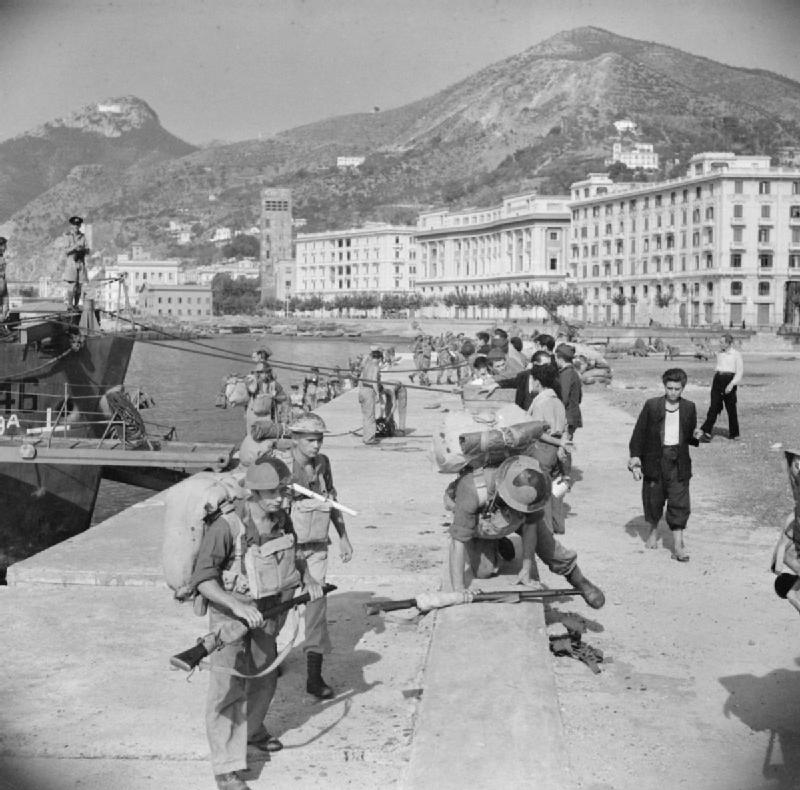
Operation Avalanche outcome: Though they faced pretty serious casualties, Operation Avalanche was an Allied success. Through this operation the Allies were able to land significant combat forces on the European mainland and help chip away at Germany’s forces.
From here, they headed north where some of the most brutal fighting of the Italian campaign took place at the Gustav Line in Cassino. Then, onto Rome.
Exploring Operation Avalanche today
Despite the significance of this operation, there aren’t a whole lot of places at which you can learn more about it. However, there are three sites worth visiting when you tire of the usual Amalfi Coast business of sun, sea, and scenery. Check out these 4 Salerno-area World War II sites the next time you’re in southern Italy.
Map of Salerno WWII Sites
This map contains all the Salerno-area WWII sites I mention in this post. To save this map: Click on the star ⭑ next to the map’s title to save in your Google Maps. To use this map: When you get here, open Google Maps on your phone, click “Saved” at the bottom, then click “Maps.”
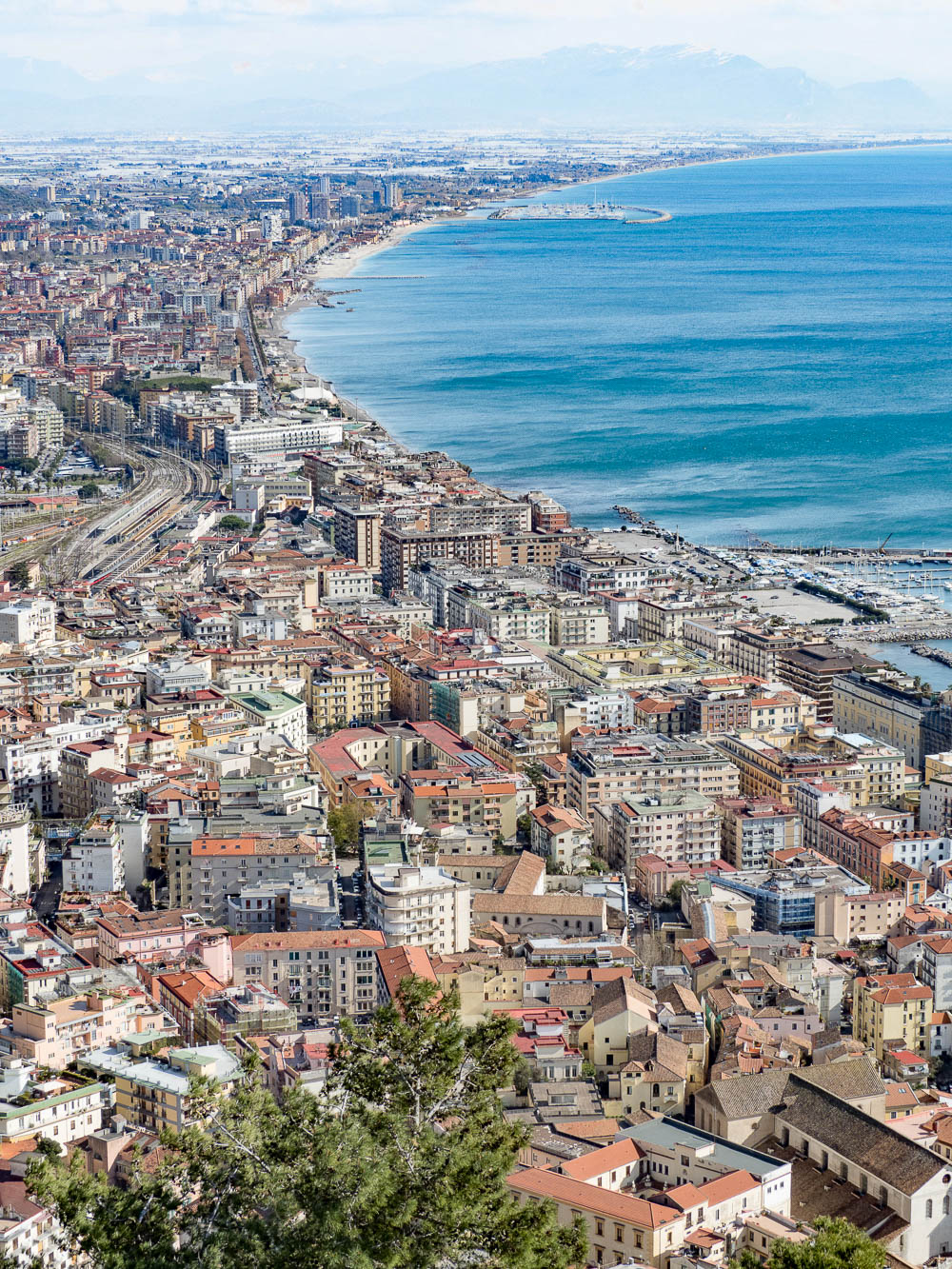
1. Museum of the Landing and Salerno Capital
Opened in 2012, the Museum of the Landing and Salerno Capital was the first museum dedicated to the amphibious landings at Salerno. (Known as Museo dello SBarco e Salerno Capitale in Italian.) Its name also refers to the fact that Salerno was the de facto capital of Italy for five months in 1944. (February 11 – July 15)
This small museum contains a large collection of original photos and archival video footage, American and Nazi uniforms, weapons, and tons of other artifacts. They also have an M4 Sherman tank, a Willys Jeep, and a railroad car once bound for Auschwitz.
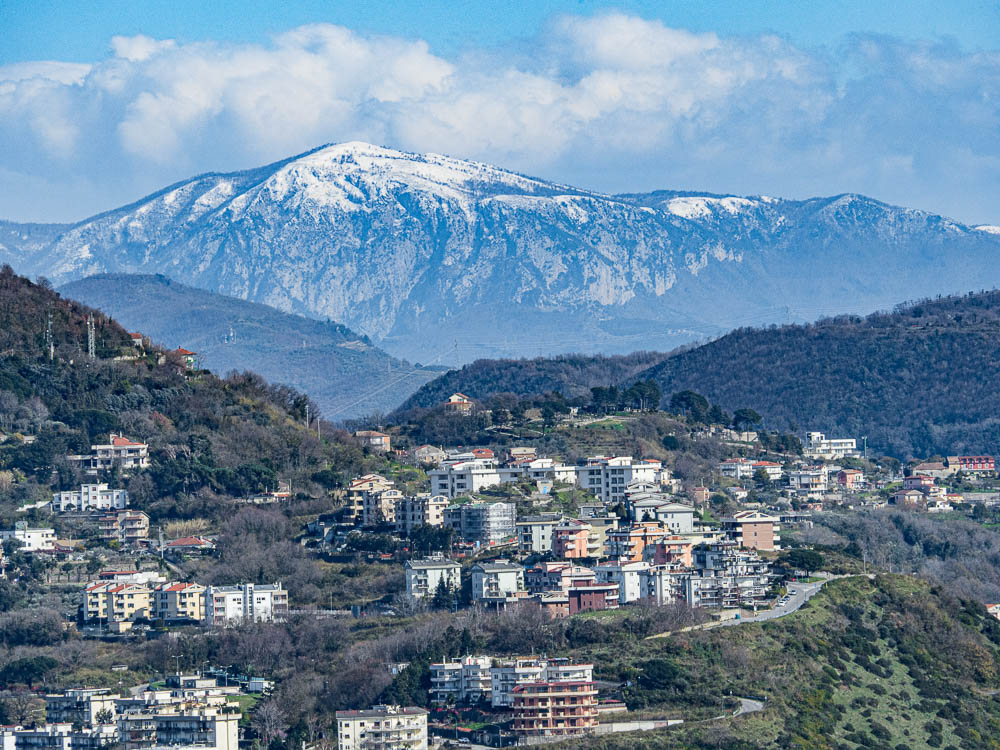
Need to know
But the most important thing you need to know about the Museum of the Landing is that it’s not exactly easy to get into. They are open only by reservation.
To get in, you have to call them to inquire about opening for you. And you have to do that at least a few days in advance. As it stands, the number to call is +39 379 284 7091. Hope you speak Italian! (I got the owner of the Salerno B&B I was staying in to call for me.)
Because my plans on my latest visit to Italy were super up-in-the-air, I called them only the day before I wanted to visit and they said that was not enough time. So, if this is a museum you’d like to check out on your next visit to Salerno, make sure to call them at least a few days before you want to go. The sooner the better probably!

2. Salerno War Cemetery
Located just outside the city of Salerno is the Salerno War Cemetery. Here, you’ll find 1,851 Commonwealth graves from World War II. (That is, those killed during and following the Salerno landings who hailed from the United Kingdom, Canada, India, Australia, New Zealand, and South Africa. The fallen American troops were all buried at the Sicily-Rome American Cemetery in Nettuno.)
Of those buried here in Salerno, 109 are unidentified, two are non-war graves, and one belongs to a Russian soldier who died on November 11, 1944.
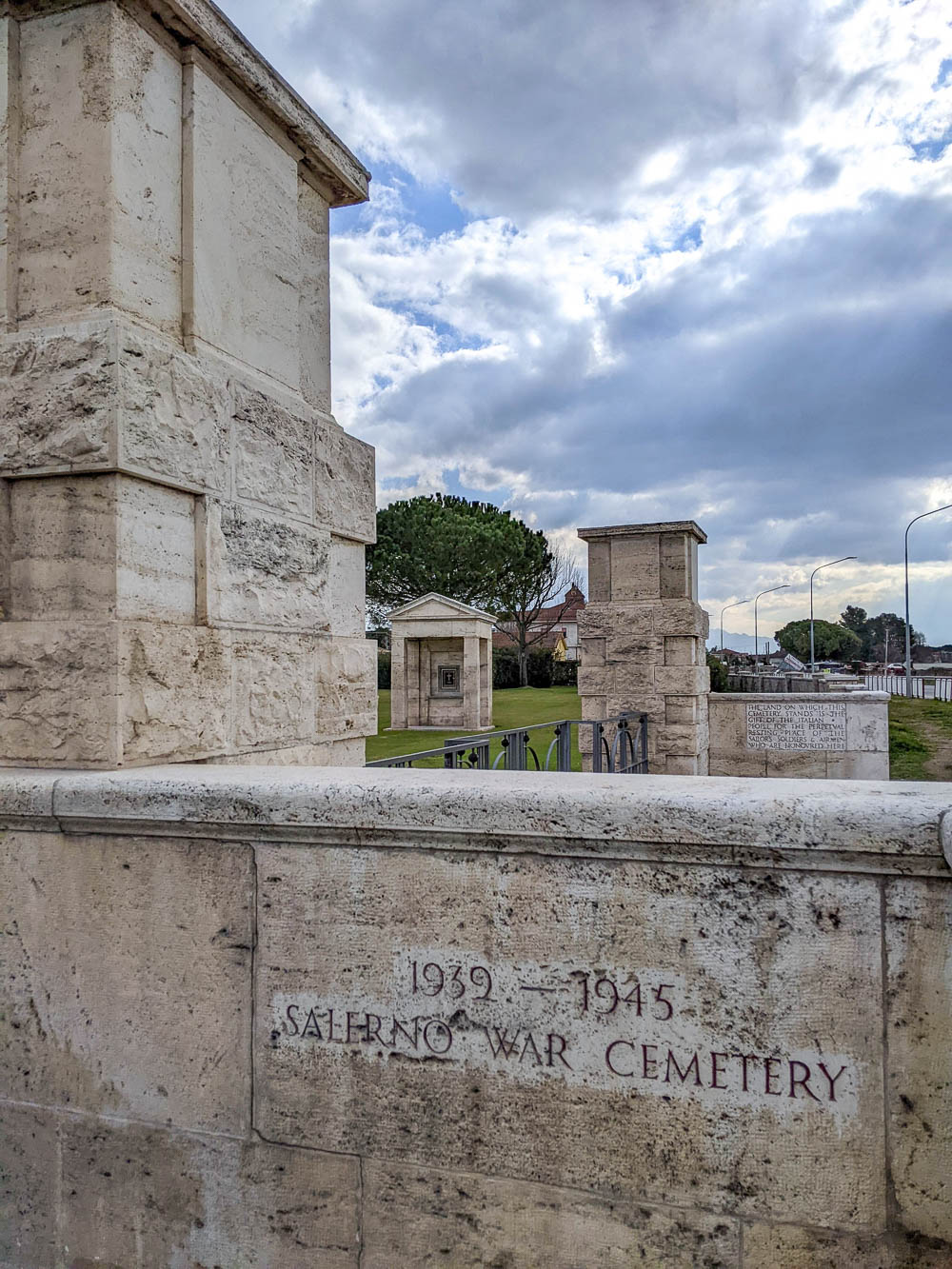
You can read all about the landings at Salerno and the Italian campaign here on their Visitor Information Panel. The cemetery also contains a book with an alphabetical listing of all those buried there including their rank/job during the war, their birthdays, ages, parents’ names, and more if available.
The Salerno War Cemetery is open 24 hours a day, 365 days a year. It’s located off a main road and does not have a parking lot (that I could find). For my visit, I turned left just past the cemetery onto Via Vesuvio and parked next to the open gate towards the back.
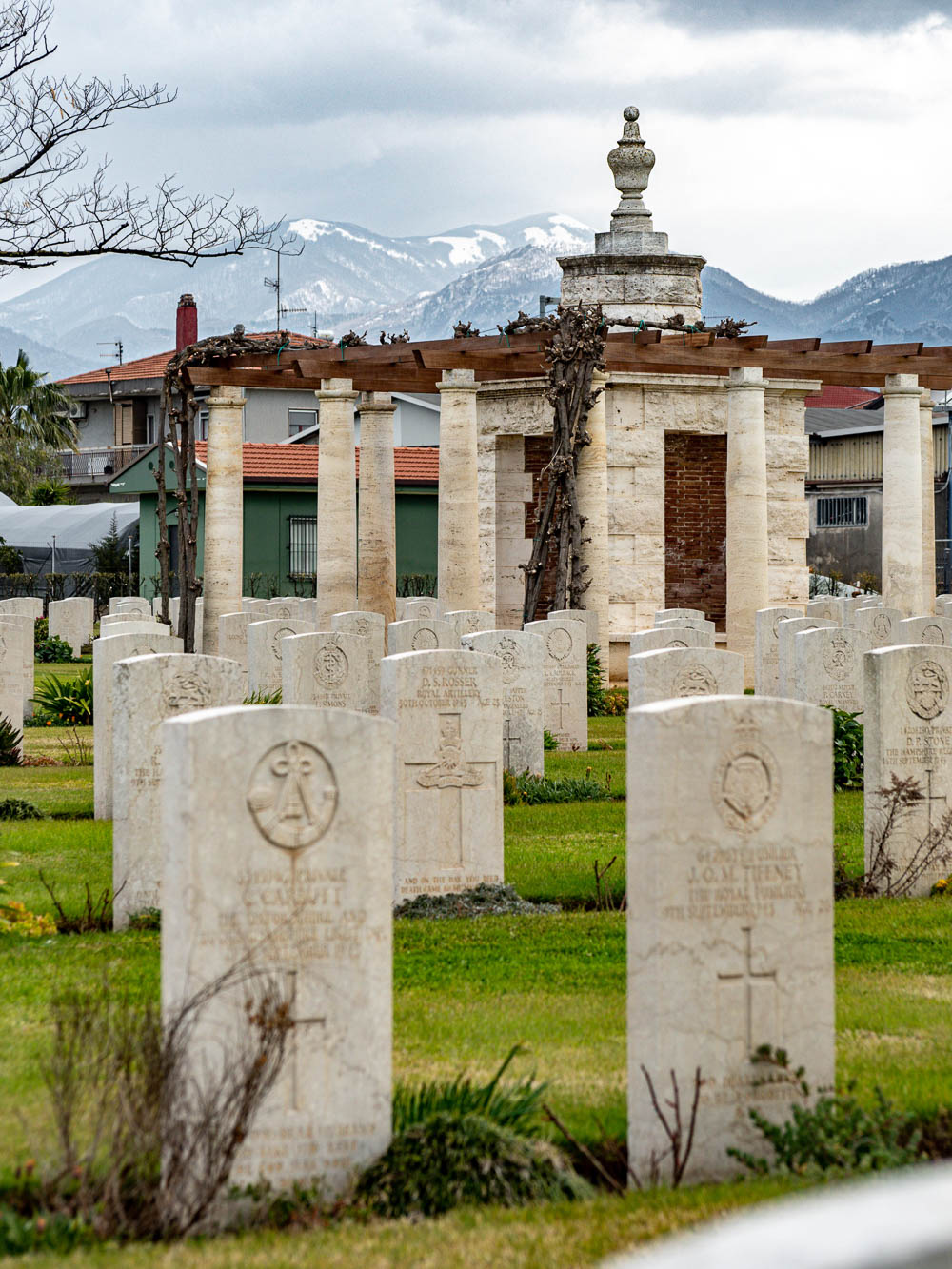
3. Museum of Operation Avalanche
The Museum of Operation Avalanche (which I imagine often gets confused with the Museum of the Landing) is another that’s solely dedicated the Salerno landings. It’s located in a 15th century monastery outside Salerno in a town called Eboli.
It also opened in 2012 and includes a multimedia space, artifacts, weapons, uniforms, and more from American, British, and German troops. It also contains a collection of “private writings” from the local community as they documented their personal experiences during this time.
This museum’s pride and joy is its “Emotional Room.” In here you’ll be surrounded by film and image projections in a way that transports you to the battlefields during Operation Avalanche.
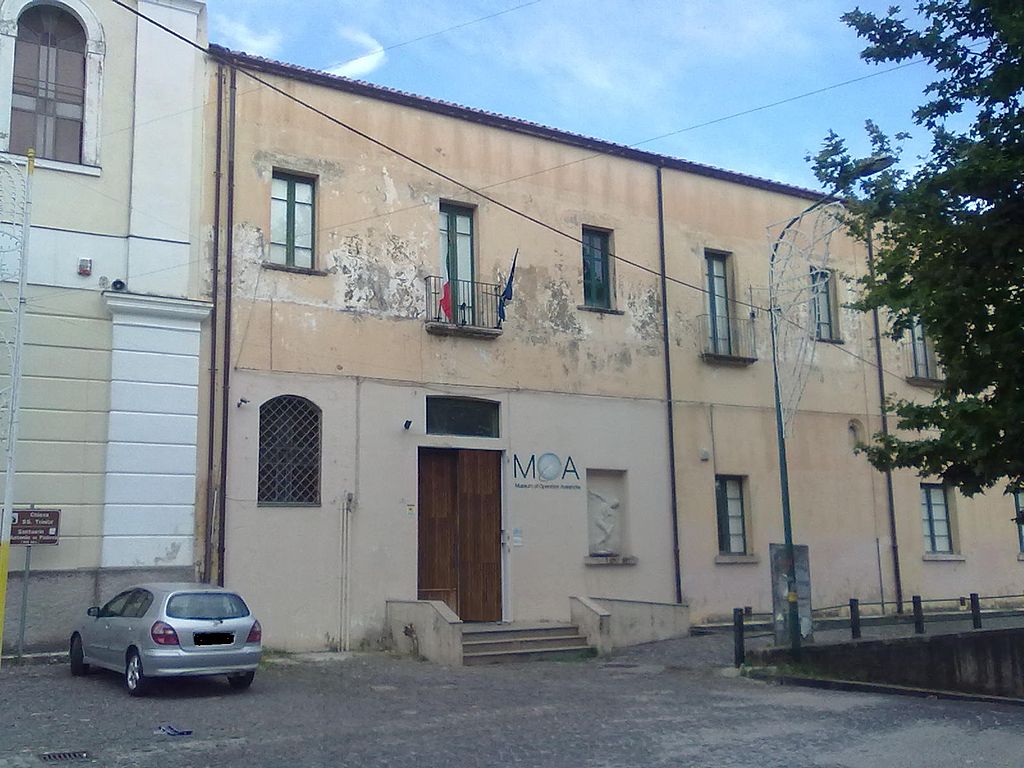
4. 36th Infantry Division Monument – Paestum
A wee bit south of Salerno you’ll find the town of Paestum, most famous for being the location of some incredibly well-preserved Greek ruins. (Yes, Greek!) Paestum is also where the US 36th Infantry Division landed on September 9 during Operation Avalanche.
Inside the gated community park near Torre Beach you can visit an obelisk monument dedicated to the men of the 36th who “gave their lives for the liberation of Italy.”
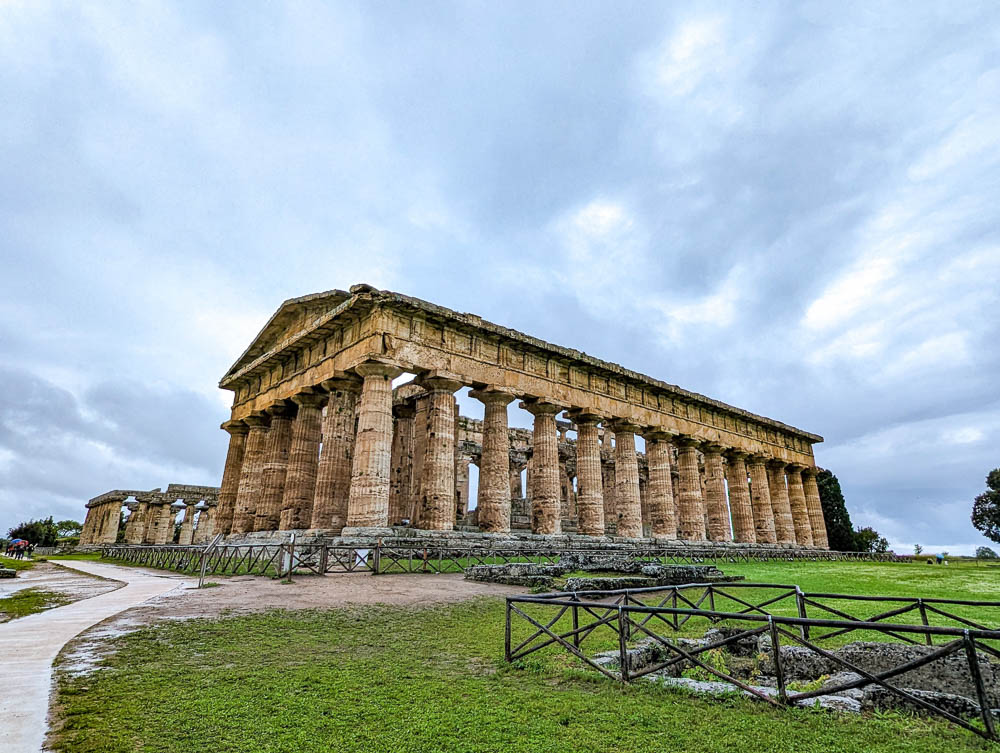
Additional reading on Operation Avalanche
If you’re interested in learning more about Operation Avalanche and how the Allied influence in Italy—dare I say it—snowballed from there, check out these books:
For everything else there is to do in Salerno, check out my post: 25 Awesome Things to Do in Salerno. And if you’re looking for interesting side trips, read my post on the best day trips from Salerno.
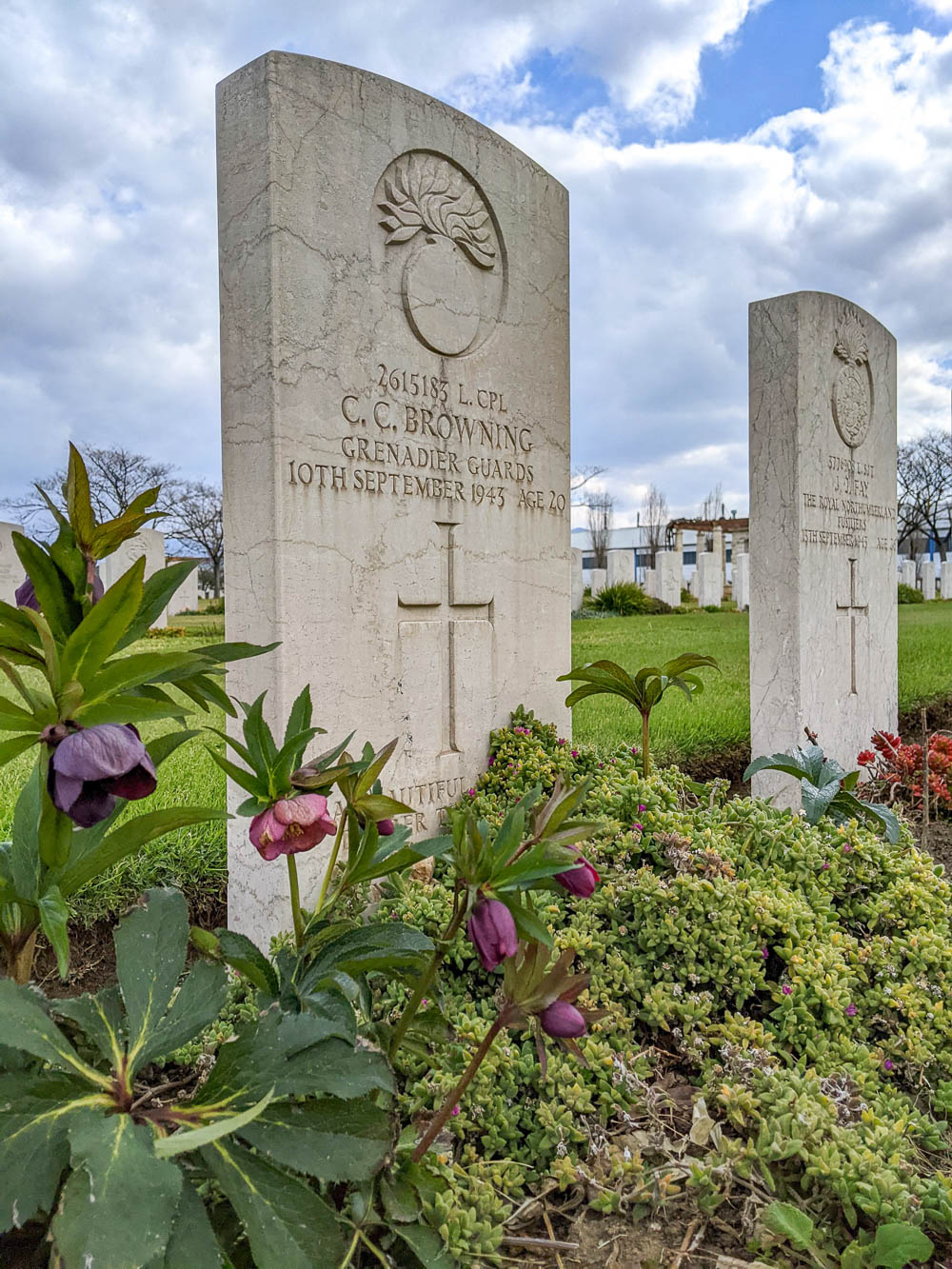
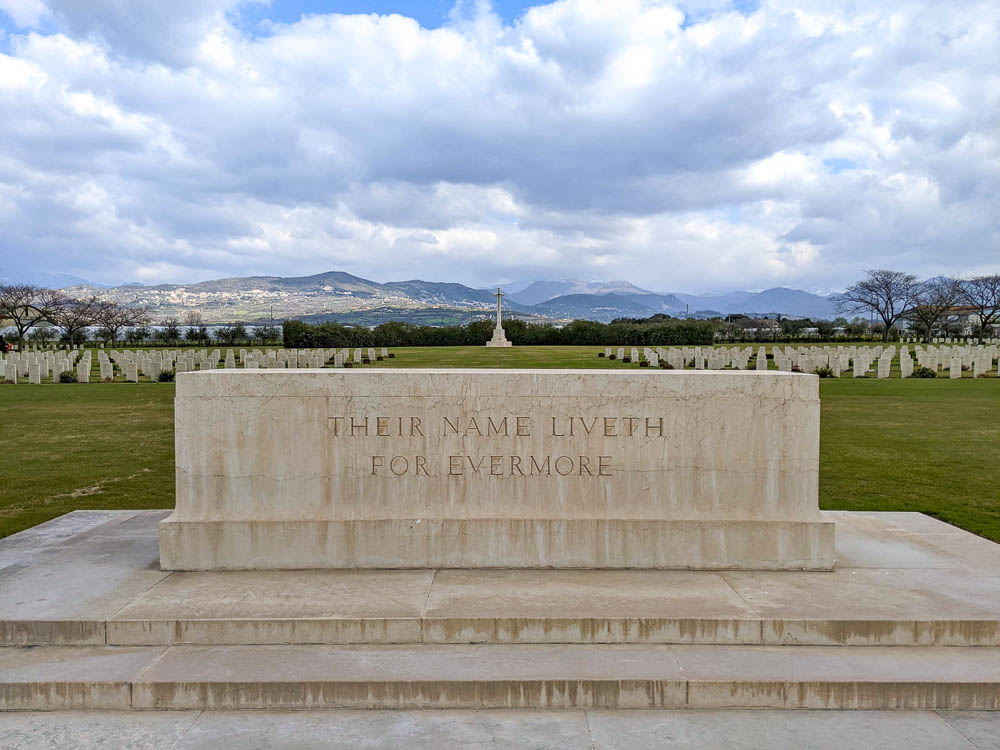
More info for your visit to Italy
- Hotels: Find great places to stay on Booking.com (my go-to). Expedia and Hotels.com are worth checking too. VRBO is best for apartment rentals.
- Rental cars: Check out the best rental car deals here.
- For great local tours, check out all the options from Viator and Get Your Guide.
- Travel planning: Don’t forget an Italy guidebook and this must-have Italy customs and culture guide!
- Want more? See all my Italy posts here.
Like this post? Have questions about visiting any of the WWII sites in Salerno? Let me know in the comments below. Thanks for reading.

Save this info, pin this image:
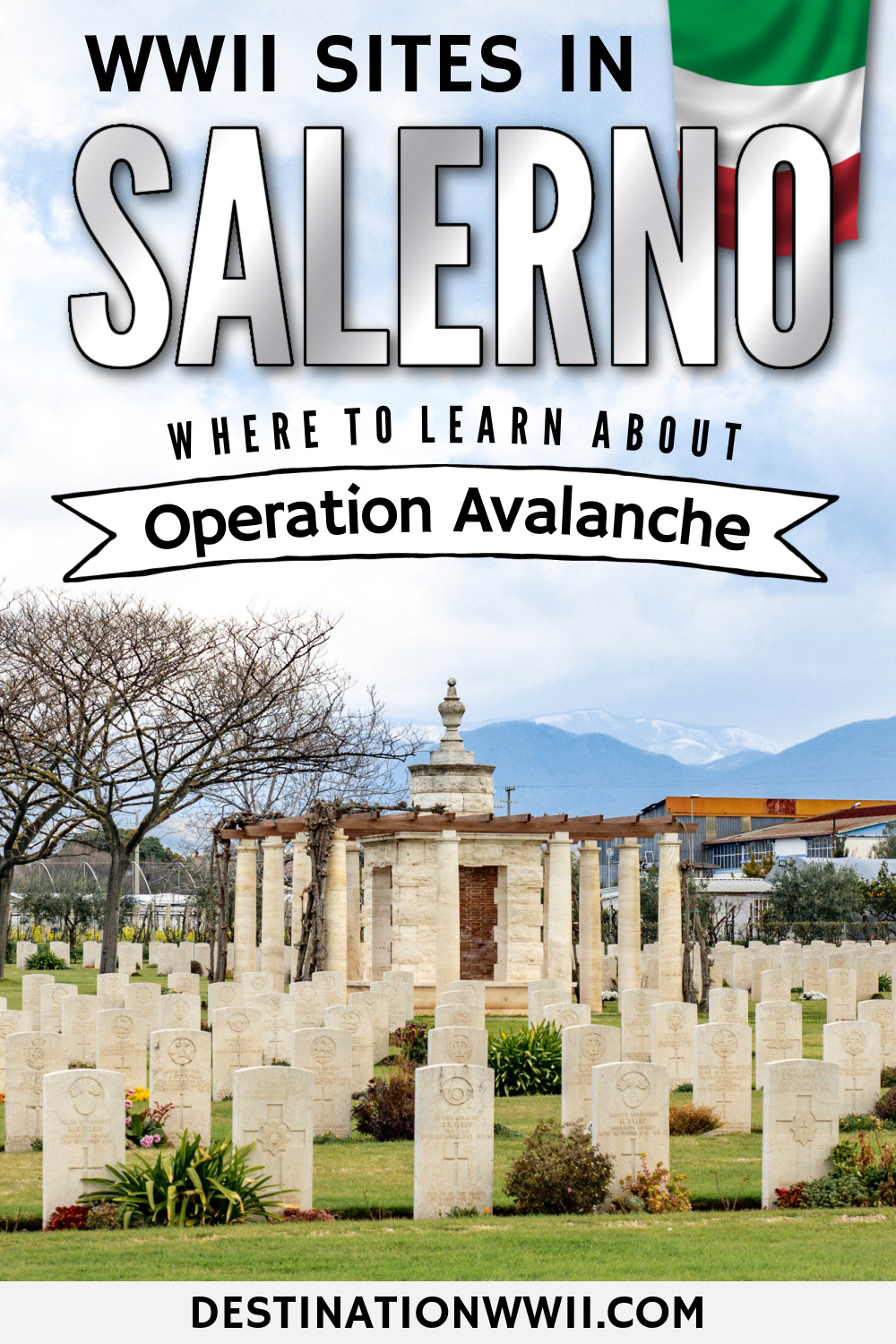
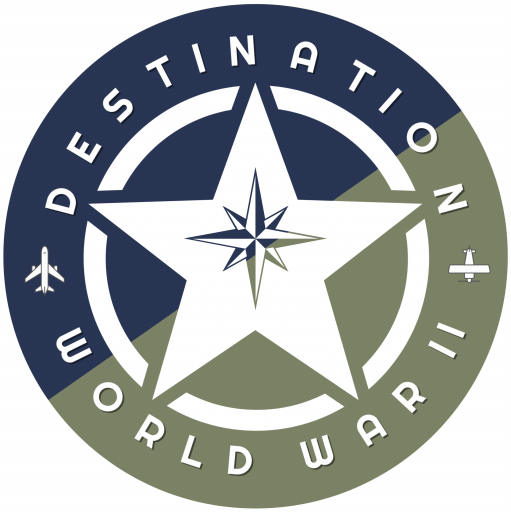

Just back from Italy where my cousins live in Altavilla!
I spent several hours on hill 424 overlooking the town. We spent time at the Salerno Cemetery and yes parking is difficult . I’ll be back and hope to contact Ashley for a guided tour!
I’m glad you had a great trip, Patrick!
I visited the landing site at Paestum and the memorial
Thank you so much for sharing this information and your experience. We are headed to the Amalfi Coast in December and will try to, at least, get to the cemetery.
Absolutely – happy to help! I hope you can make it. 🙂 (Either way you’ll have a beautiful trip!)
In September I am going to visit Naples and Salerno so I can visit the grave of my mother’s brother at the war cemetery. He was killed at Salerno on 11 September’43. He was in the Scots Guards. He has always been part of my life even though he died before I was born. How should I get there from my hotel in Salerno? I’d rather not hire a car. Is it walkable from Salerno itself or is that not advisable?
Hi Nicola, wow what a story. Unfortunately, the Salerno War Cemetery is a 20-minute drive from the center of Salerno. (Google is telling me it’s a 3.25-hour walk.) You definitely need a car to visit the cemetery. If you don’t want to rent a car, you can probably arrange a taxi to take you there and back. Talk to the people at your accommodation and see if they can point you in the right direction.
My wife and I will be staying in Sorrento for a week in April and would like to visit Salerno and the WW2 sites. Any suggestions on how to accomplish this?
Hi Leland and Robin! The easiest way would be to rent a car and drive yourself to the sites. April isn’t quite the busy season yet so things like renting a car, getting around, finding parking, etc. shouldn’t be much of an issue. Otherwise, search for “Salerno WW2 tours” and you should find a handful of companies that run comprehensive tours of the area. Perhaps one of those will work for you!
I along with my wife two daughters and two granddaughters have just returned to the UK after a two week holiday in the Salerno area, Our holiday was planned so I could visit the grave of a man I have known all my life even though I never met him. Serjeant John Dennis McEvoy of the 3rd Battalian Coldstream Guards, he died on the 16th September 1943 just 22 years old.
WE WILL ALWAYS REMEMBER THEM
John Dennis Roper
That’s great to hear, John! I’m glad you were able to make the visit.
To tell the truth, I think that it is really important to delve Into the history of our world and expand your knowledge about it. Italy’s Amalfi Coast is a truly incredible place which played a significant role in the formation of Italy as a powerful state. Of course, each military operation entails huge human losses and, unfortunately, it is inevitable. I can’t understand people who feel such a huge power that they attack a foreign state, destroying people’s homes and way of life, but I’m really glad that Italy was able to cope with everything. I think that it is necessary to visit places which can enlighten you about such important events that have affected the country to a global extent, because they are the best way to get closer to the history. I think that such places are the best way to pay tribute to people who gave their lives for such a necessary victory and our well-being. All these places carry such an important meaning and can reveal so many incredible facts for you. I really like this idea of “Emotional Room” because it is the best way to mentally go back to that period, feeling all the pain and courage of soldiers.
Well said, Marina!
My father was in 5th Army 601st TankDestroyer
Wow! Thanks for sharing, Mike. 🙂
Ashley , Curious to know if you visited Altavilla outside of Salerno ? Our cousins live there and I visited there several years ago but never made it to hill 424 where heavy fighting took place .
Can you give any tips as to anything I should see in Altavilla ? Thank you for your posts!!
Hi Patrick! No, I didn’t. But hopefully next time I’m in the area!